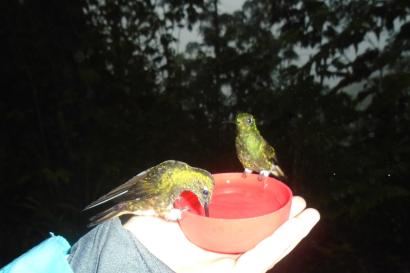Three weeks down, and one left to go on the mainland! Just about everything about Quito and mainland Ecuador has been an experience of a lifetime so far. Up to this point, the Wildlife Conservation & Management module has been involved more outside of the classroom than in, which has created an incredibly engaging educational opportunity. In the last week alone we took field trips to Fiorentina Rose Farm, the Guayllabamba Zoo, and Reserva Ecologica Antisana. Each field trip contributed different learning components, but we learned that many issues around environmental conservation here are highly interconnected. The more we learn about the economy, Ecuador’s resources, and the controversy surrounding it all, the more clear this web of natural resource management becomes.
Our first visit was to Fiorentina Rose Farm in the Cayambe region, just outside of Quito. They export roses all over the world to places including the United States, Canada, Europe, Russia, and the Middle East. Interestingly, they have 300 employees, of which 75% are women. Like several other South American countries, Ecuador has a reputation for having a “machismo” culture. With that said, Fiorentina is an anomaly by the way they claim to encourage women empowerment in the workplace.
Next, we made a visit to the Guayllabamba Zoo, which I would describe more as a reserve or sanctuary for injured and endangered species. Several of the birds, mammals, reptiles, and amphibians present there were rescued from precarious situations. Many are on the course to be tagged and released back into the wild, while others are permanently debilitated and will thus be living out there lives at Guayllabamba.
Lastly, we took a trip out to Reserva Ecologica Antisana, where you can find thousands of hectares of a páramo ecosystem and Antisana Volcano, Ecuador’s fourth highest volcano. Although its not as aesthetically appealing as the Amazon rainforest, Ecuador’s Andean páramo holds vital importance as it provides 85% of Quito’s water supply. Around 60% of this unique ecosystem’s are also endemic. However, the páramo’s integrity is being threatened by habitat loss from livestock grazing, agricultural cultivation, and pit mining. This was easily my favorite field trip because of the amazing vast expanses that the páramo has to offer, as well as its undervalued significance.

Julian Garcia
<div>Hi there all! My name Julian Garcia and I was proudly born and raised in San Antonio, Texas. I am in my senior year at Cornell University studying International Agriculture and Rural Development with interests in sustainable cropping systems and economic development. In my free time, you can find me hiking in the Adirondacks, spelunking 100 feet underground in a cave, trying to cook up something tasty, or reading a Hemingway novel. I hope you enjoy the blog!</div>







